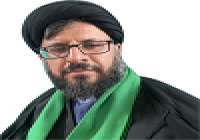Hijab in Law
The term “hijab—الحجاب” literally means a cover, curtain or screen.
It is not a technical term used in Islamic jurisprudence for the dress code of women.
The term used in Islamic jurisprudence that denotes the conduct of unrelated men and women towards one another, and their dress code, is “satr or s?tir—الستر، الساتر”.
In the last two decades however, the Muslims in the west, as well as the media, use the term “hijab” to define the headdress and the overall clothing of Muslim women.
Islam has strongly emphasized the concept of decency and modesty in the interaction between members of the opposite sex.
Dress code is part of that overall teaching.
(Qur'an: Chapter 24an-Nur (the Light),, Verses 30-31) says “And tell the believing men to lower their gaze and be modest. That is purer for them. Lo! Allah is aware of what they do. And tell the believing women to lower their gaze and be modest, and to display of their adornment only that which is apparent, and to draw their veils over their bosoms, and not to reveal their adornment save to [those relatives who fall within bounds of close relationship explained in the Qur’an]...”
This is a command to Muslim men that they should not lustfully look at women (other than their own wives); and in order to prevent any possibility of temptation, they are required to cast their glances downwards. It is also a command to Muslim Women to lower their eyes...
Extract from Islamic Laws of Ayatullah Seestani Covering required for prayer
A woman should cover her entire body while offering prayers, including her head and hair.
As a recommended precaution, she should also cover the soles of her feet.
It is not necessary for her to cover that part of her face which is washed while performing Wudhu, or the hands up to the wrists, or the upper feet up to the ankles.
Nevertheless, in order to ensure that she has covered the obligatory parts of her body adequately, she should also cover a part of the sides of her face as well as lower part of her wrists and the ankles.
It is reported that the Holy Prophet (saw) once asked his daughter: "What is the thing, which is a blessing for a woman?"
She (as) replied, "She must not see a strange man and the strange man should not see her".
The most important message of this tradition is that of Hijab.
A woman must cover herself and preserve her modesty in such a manner that neither does she come into unnecessary contact with Na-Mahram men, nor do they come into unnecessary contact with her!
Today, we find that there are three kinds of Muslim women:
1. One who do not wear Hijab at all and their most usual argument to justify their action is that: 'As long as our hearts are pure and clear, we do not have to put on any Hijab.
2. The second kind is of those who put on Hijab but not properly.
They either don't wear it properly - Or they consider Hijab as a passport to freely see and communicate to the strangers.
3. And the third kind is of those women who not only cover themselves, but they are extremely careful in their dealings with the strangers.
The answer of this has been given to us in the history of Islam and those women who call themselves as followers of Zahra (as) & Syeda Zainub (sa) , should identify themselves with these personalities.
One incident tells us that the Holy Prophet (saw) once brought along a blind person to the house of Sayyida Fatimah (as) and knocked at her door.
He also informed her about the blind person's company. Sayyida Fatimah (as) asked her father to wait so that she could cover herself.
When the Holy Prophet (saw) said, But Fatimah! This man is blind and he cannot see you".
She (as) responded by saying, "O Father! So what if he is blind? He cannot see me but I can see him – so allow me to cover myself".
Kerbala event is another lesson for hijabs importance
Many Muslim women do not wear Hijab in fear of being ridiculed by the wider society.
They should have firm faith in Allah (swt) and always pray to HIM , through the Intercession (Waseelah) of Sayyida Fatimah (as) to give them courage and protect them from every sort of mischief whilst they are observing Hijab.
By, Islamic Laws of Ayatullah Seestani
www.islamic-laws.com










